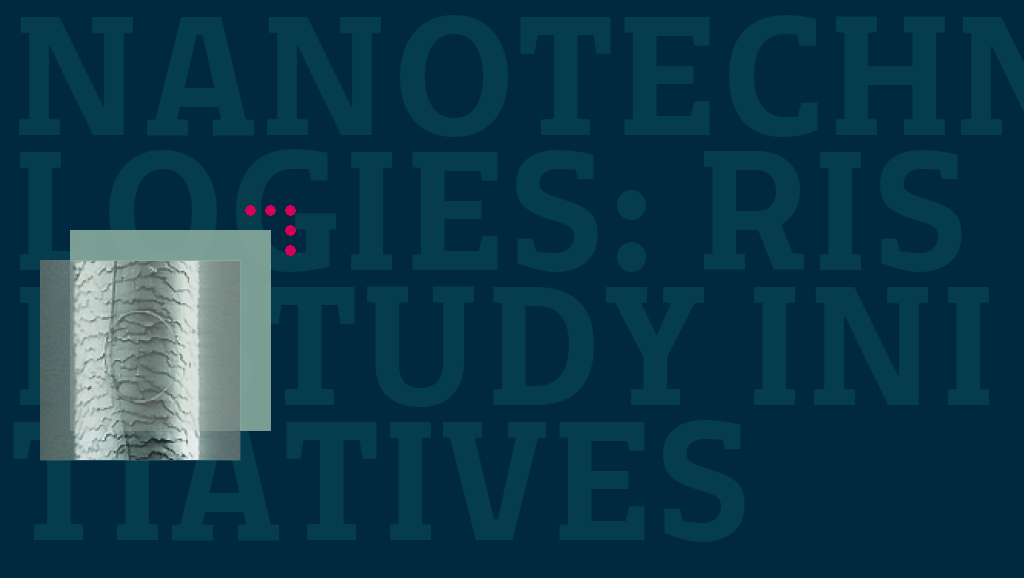The following excerpts are taken from the article: Nanotechnology: Looking As We Leap, di Ernie Hood pubblicato in Environmental Health Perspectives (the peer-reviewed journal of the National Institute of Environmental Health Sciences), Settembre 2004.
‘To ensure that nanotechnology flourishes responsibly and with strong public support, Kulinowski [NbE: Kristen Kulinowski, executive director for education and policy at the Rice University Center for Biological and Environmental Nanotechnology (CBEN)] says, advocates believe it’s very important to gather risk data so that questions can be answered and problems addressed early on in the trajectory of the technology development.
Sean Murdock, executive director of the NanoBusiness Alliance, a nanotechnology trade association, thinks it is possible to avoid past mistakes of rolling out a new technology too far ahead of health and safety information. "The risks are there, they’re real, but they’re manageable," he says. "And on balance, with the right processes in place, we’re going to be able to deal with all of those risks, we’re going to mitigate those risks, and we’re going to realize the upside of the potential."
[…]
Oberdörster [NbE: environmental toxicologist at Southern Methodist University] has described the findings [NbE: A study published in the July 2004 issue of EHP documenting oxidative stress (a sign of inflammation) in the brains of largemouth bass exposed to aqueous fullerenes: it has received perhaps the most attention and raised the most warnings of any nanomaterial health implication experiment to date; in the Bassetti Foundation web site, see also the contribute in "Collaborate" of 19 Sept. 2004 (in italian)] as "a yellow light, not a red one," and explains further that there are some indications from the inhalation and fish studies that there is a potential for nanoparticles to react with tissues and create inflammation. "So the next step then is to look at it in a broader spectrum before we bring all these products out into the market, to make sure that they are safe so that consumers are protected," she says.
[…]
Roco [NbE: Mihail Roco, senior advisor on nanotechnology to the National Science Foundation (NSF) and coordinator of the NNI – The National Nanotechnology Initiative, the interagency consortium], who has been instrumental in the NNI’s ongoing attention to both safety implications and the potential societal impacts of nanotechnology worldwide, agrees that the time for responsible risk assessment is now: "This is no longer something you do after the fact, after you do the other research, but has to be done from the beginning, to be an integral part of the research. You have to look at the whole cycle of activity, not only at the first phase when you create something."
[…]
The NTP [NbE: National Toxicology Program], in association with the University of Florida, is also planning a workshop for November 2004 designed to bring together scientists from the toxicology community, environmental engineers, and representatives of the pharmaceutical and chemical industries. The workshop will focus on questions about how best to assess exposure to nanomaterials and evaluate their toxicity and safety.
Walker [NbE: lead scientist of the investigation by NTP –National Toxicology Program– involving safety studies of representative manufactured nanomaterials] thinks these efforts are timed perfectly. "If we’d tried to do this two or three years ago, we may actually have been targeting things that weren’t important," he says. "You don’t want to be too early on the curve, but then you don’t want to be too late. This is about the right time … and we are being very open about how things are moving along, because the NTP is completely open, and all the data is ultimately the public’s."

Research Centers and Initiatives
[ click on the image to see it in a bigger format]
The International Dialog on Responsible Research and Development of Nanotechnology took place 17-18 June 2004 in Arlington, Virginia, and was designed to help develop a global vision of how the technology can be fostered with the appropriate attention to and respect for concerns about the societal issues and environmental, health, and safety implications. ‘
The excerpts above are taken from the article: Nanotechnology: Looking As We Leap
[Environmental Health Perspectives, Volume 112, Number 13, September 2004]
See also:
– Fullerenes and Fish Brains: Nanomaterials Cause Oxidative Stress
[Environmental Health Perspectives, Volume 112, Number 10, July 2004]– Manufactured Nanomaterials (Fullerenes, C60) Induce Oxidative Stress in the Brain of Juvenile Largemouth Bass
[Environmental Health Perspectives, Volume 112, Number 10, July 2004]

For comparison’s sake. A micrograph shows a nanowire curled into a loop in front of a human hair. Nanowires can be as slender as 50 nanometers, about one-thousandth the width of a hair. image credit: Chad Mirkin/ Northwestern University
















